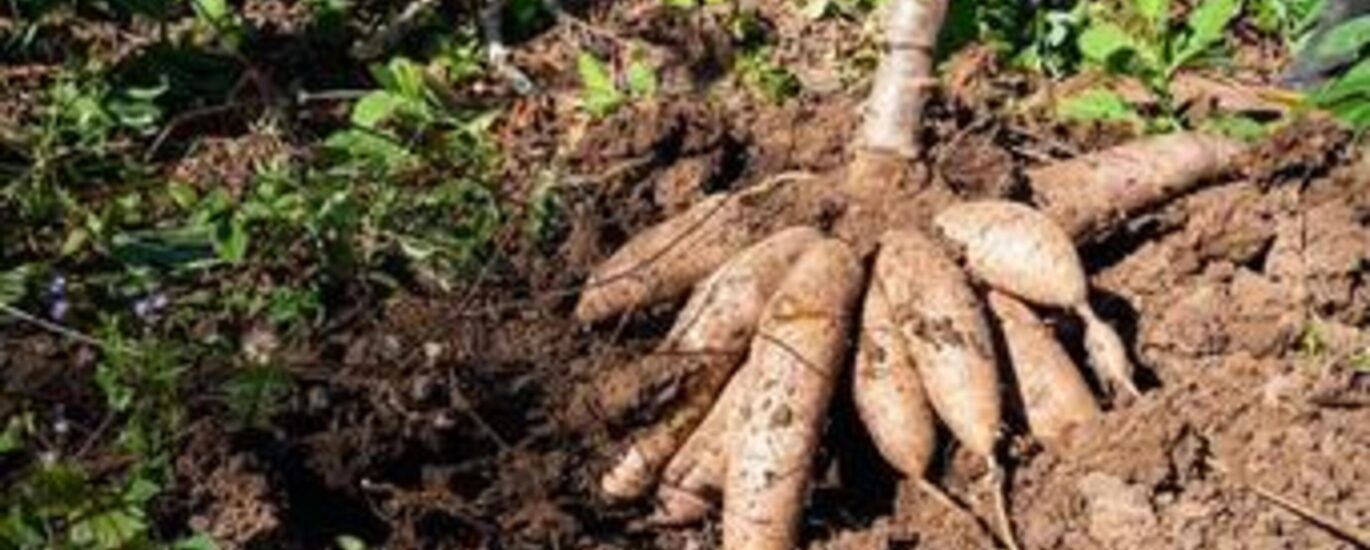Cassava (*Manihot esculenta*) is a vital staple crop for millions of people across Africa, Latin America, and Asia. As a drought-resistant and high-yield crop, it plays a crucial role in food security, particularly in tropical and subtropical regions. However, the rapid expansion of cassava farming has raised significant environmental concerns, including deforestation, soil degradation, and water pollution.
This article explores the environmental impacts of cassava production and highlights sustainable farming techniques that can help protect ecosystems while ensuring food security.
—
Cassava: A Key Crop for Global Food Security
Characteristics of Cassava
– Root Structure: Elongated, cylindrical tubers with rough brown skin and white or yellowish flesh.
– Nutritional Value: Rich in starch but contains cyanogenic compounds that must be removed before consumption.
– Varieties:
– Sweet Cassava: Low cyanide content, safe to eat after simple cooking.
– Bitter Cassava: High cyanide levels, requires extensive processing (soaking, fermentation).
Cassava is a resilient crop, capable of growing in poor soils with minimal water, making it a lifeline for smallholder farmers. However, its increasing demand—driven by population growth and industrial uses (biofuels, starch, pharmaceuticals)—has led to unsustainable farming practices.
Environmental Impacts of Cassava Farming
1. Deforestation and Habitat Loss
– Expanding cassava fields often encroach on forests, reducing biodiversity.
– Loss of trees disrupts carbon sequestration, worsening climate change.
– Wildlife habitats are destroyed, affecting pollinators and natural pest predators.
2. Soil Degradation
– Nutrient Depletion: Cassava’s deep root system extracts large amounts of nitrogen, potassium, and phosphorus, exhausting soil fertility over time.
– Erosion: Grown on slopes without cover crops, cassava leaves soil exposed to wind and rain, leading to erosion.
– Monoculture Farming: Continuous cassava planting without crop rotation depletes soil health and increases pest infestations.
3. Water Pollution
– Excessive use of chemical fertilizers and pesticides contaminates groundwater and rivers.
– Improper waste disposal from cassava processing (e.g., starch extraction) releases organic pollutants, harming aquatic ecosystems.
4. Greenhouse Gas Emissions
– Decomposing cassava waste produces methane (CH₄) and carbon dioxide (CO₂), contributing to global warming.
– Slash-and-burn farming techniques release large amounts of CO₂.
—
Sustainable Cassava Farming: Solutions for a Greener Future
1. Agroforestry and Intercropping
– Planting cassava alongside nitrogen-fixing crops (e.g., legumes) improves soil fertility.
– Integrating trees (e.g., acacia, banana) reduces erosion and enhances biodiversity.
2. Conservation Agriculture
– Minimum Tillage: Reduces soil disturbance, preserving its structure.
– Cover Cropping: Prevents erosion and replenishes organic matter.
– Crop Rotation: Alternating cassava with beans, maize, or peanuts maintains soil nutrients.
3. Organic Fertilizers and Biopesticides
– Composting cassava peels and other organic waste enriches soil naturally.
– Using neem oil or chili-based pesticides reduces chemical runoff.
4. Efficient Water Management
– Rainwater harvesting and drip irrigation minimize water waste.
– Constructing terraces on slopes prevents soil erosion.
5. Waste-to-Value Innovations
– Cassava peels can be converted into animal feed or biofuel, reducing waste.
– Wastewater from processing can be treated and reused.
—
Case Study: Success Stories in Sustainable Cassava Farming
Cameroon’s Agroecological Transition
– Farmers in Cameroon have adopted intercropping (cassava + beans) to boost yields and soil health.
– NGOs promote biogas production from cassava waste, providing clean energy.
Thailand’s Circular Economy Model
– Cassava starch factories recycle wastewater for irrigation.
– Byproducts are turned into biodegradable packaging, reducing plastic pollution.
—
Conclusion: The Path Forward
Cassava is a critical crop for food security, but its unchecked expansion threatens ecosystems. By adopting sustainable practices—agroforestry, organic farming, and waste recycling—farmers can increase productivity while protecting the environment.
Governments, NGOs, and the private sector must collaborate to:
✅ Promote eco-friendly farming techniques.
✅ Invest in research for climate-resilient cassava varieties.
✅ Support smallholder farmers with training and resources.
Sustainable cassava farming isn’t just an option—it’s a necessity for a greener, more food-secure future.
*Together, we can cultivate cassava without costing the Earth.*
Author: Dr. Tchatat Gabriel





